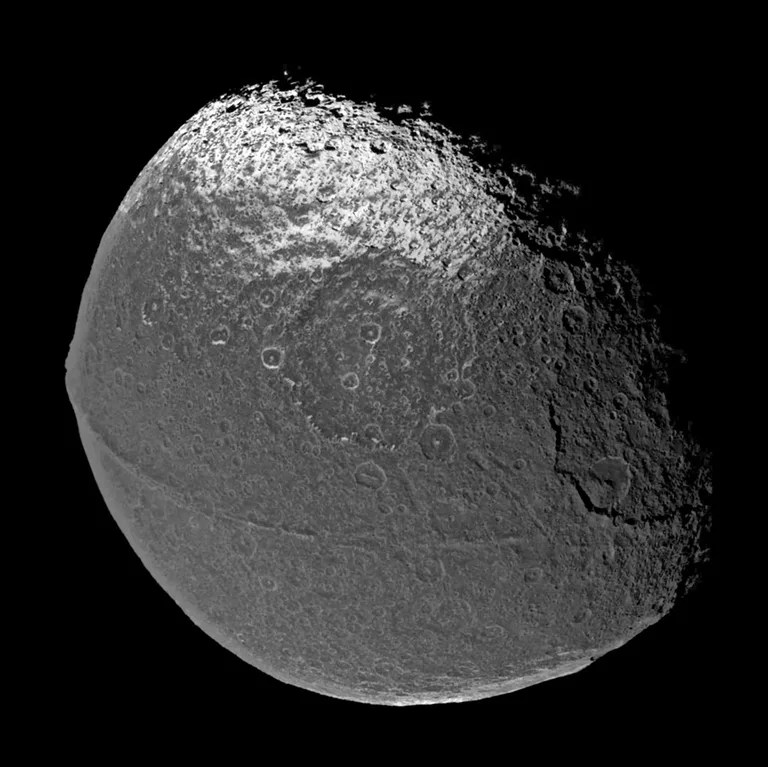1 min read

Cassini flew past Iapetus on New Year's Eve 2004, capturing the four visible light images that were put together to form this global view. The scene is dominated by a dark, heavily-cratered region, called Cassini Regio, that covers nearly an entire hemisphere of Iapetus.
On Sept. 10, the Cassini spacecraft performs its closest flyby during the entire mission of the odd moon Iapetus, passing by about 1,640 kilometers (1,000 miles).
Iapetus is a world of sharp contrasts. The leading hemisphere is as dark as a freshly-tarred street, and the white, trailing hemisphere resembles freshly-fallen snow. Scientists want to know more about the composition of the dark material that coats Iapetus. They also want to learn more about Iapetus' distinctive walnut shape and the chain of mountains along its equato
Date
Sept. 10, 2007
Altitude
1,022 miles (1,644 km)
Speed
5,368 mph (2.4 km/sec)
Share
Details
Last Updated
Jan 24, 2024
Editor
NASA Science Editorial Team
Related Terms
Keep Exploring







